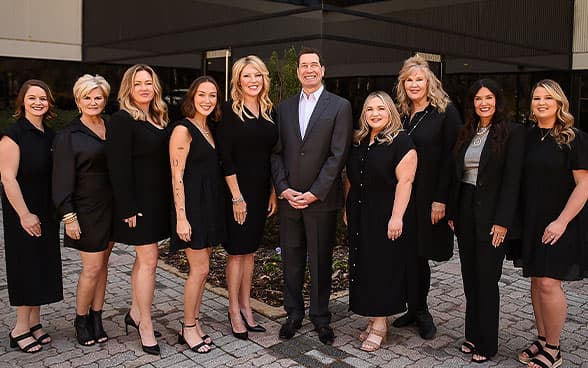The Aging Face Part 2: What You See & Why
November 7, 2023 - Rhys Branman, MD Changes in the face are the most obvious during the aging process. Aging may be tougher on women than men in our culture. Let’s take a look at some of the most obvious signs of facial aging. You may have heard the term “keep your figure or your face.” This refers to the loss of volume in the face as a person ages. Consequently, heavier women with more body fat retain more volume in their faces. However, most women are not happy being overweight, so this is not a desirable trade off. Then of course there are the wrinkles.
Changes in the face are the most obvious during the aging process. Aging may be tougher on women than men in our culture. Let’s take a look at some of the most obvious signs of facial aging. You may have heard the term “keep your figure or your face.” This refers to the loss of volume in the face as a person ages. Consequently, heavier women with more body fat retain more volume in their faces. However, most women are not happy being overweight, so this is not a desirable trade off. Then of course there are the wrinkles.
-
One of the first signs of aging is loss of volume in the face. Sun damage causes collagen and elastin deterioration that results in volume loss.
-
Wrinkles develop and become more and more obvious. This volume depletion and lessening of hydration to the outermost layer of the epidermis then contributes to wrinkling.
-
The skin loses elasticity. This happens all over the body, but more so in areas exposed to the sun.
You might notice also that certain features tend to droop or elongate. The cartilage in the nose weakens and this causes the tip of the nose to appear elongated. Another feature effected by this are the ears. Both of these phenomenon are related to cartilage.
-
The nose appears to lengthen
-
The ears may appear elongated (In fact in ancient China this was considered a sign of wisdom.)
All of the above are cause by structural changes in the supporting tissue of the face or cartilage. The supporting structure of the face, the SMAS (Superficial Musculo Aponeurotic System) weakens with age, the skin and features, including eyebrows and eyelids (known as ptosis in the eyelid) succumb to drooping. The brows also tend to become lower. This is not just gravity. The weakening of the SMAS is due to sun damage, and subtle facial tissue and skeletal changes. When the underlying structures of the face weaken, then loose skin, fat, and other facial tissue can then be affected by gravity.
One more subtle cue to the aging face is coloration. As we age, the contrast of our complexion begins to fade. This is called ‘facial contrast.’ Interestingly, the contrast between the facial skin and the lips and luminance contrast of the skin around the eyes and the surrounding skin is more pronounced in women than men.
-
Facial contrast lessens as we age contributing to an aged appearance.
-
Graying eyebrows and hair may contribute to this lack of contrast.
-
More often seen in men than women is the receding hairline.
In our culture, the signs of aging can contribute to lowered self-esteem and social withdrawal. A meta?analysis of research studies has shown that younger people tend to perceive older faces as angry and in general people have “greater difficulty of identifying expressions in older than young faces may be due to age-related changes in physical features,” which may lead to lack of empathy for elders. Many social scientists have hypothesized a cultural stereotype that women should not be angry. In fact, a 2011 study from Stanford University stated “females are believed to be happy more than males, and males to be angry more than females So you can see women have good reasons to opt for cosmetic surgery. Next up, what can be done about each of these aspects of facial aging.
Dr. Branman
Call Melinda at the front desk to set up a consultation 501-227-0707

